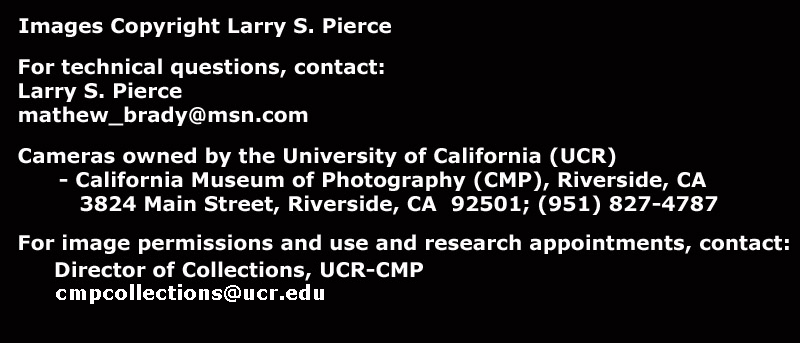Scovill Mfg. Co.
James W. Queen & Co. View Camera
Unknown Scovill Blair-Utility-Type View Camera
5 x 8, Serial No. 190
Stamped Jas. W. Queen & Co., Philada, PA over a Scovill Mfg. Co., N.Y.
stamp
.view-5x8-a-w.3.holders-2000.jpg)
.view-5x8-a-cam.only-1500.jpg)
.view-5x8-b-750.jpg)
.view-5x8-c-750.jpg)
.view-5x8-d-750.jpg)
.view-5x8-e-750.jpg)
.view-5x8-f-gg.closed-1500.jpg)
.view-5x8-f-gg.open-1700.jpg)
Bottom
.view-5x8-bottom-1500.jpg)
Top
.view-5x8-top-1500.jpg)
Stamps, lower part
of front standard: three stamps of the serial no. 326, and "F. Putnam /
New York" on the front face of the platform.
.view-5x8-serial.no.lower.gg.frame-1500.jpg)
Stamps, rear of the
top of
the platform:
Left side: "F. Putnam - New York" (one stamp having two lines)
Right side: "Marvel".
.view-5x8-stamps.top.rear.platform-1500.jpg)
American
Optical Plate Holder
.view-5x8-am.opt.plate.holder.w.film.kit-1500.jpg)
Stamp, long side of holder: "Amer.
Optical Co. / Scovill Mfg. Co., N.Y."
.view-5x8-stamp.am.opt.holder-1500.jpg)
5 x 8" serial number probably 299 camera
with a platform having "L"-shaped edges the same as the Blair Utility
Camera and the L.M. Prince & Bros. Utility Camera.
The clip that holds the ground glass frame up is home made.


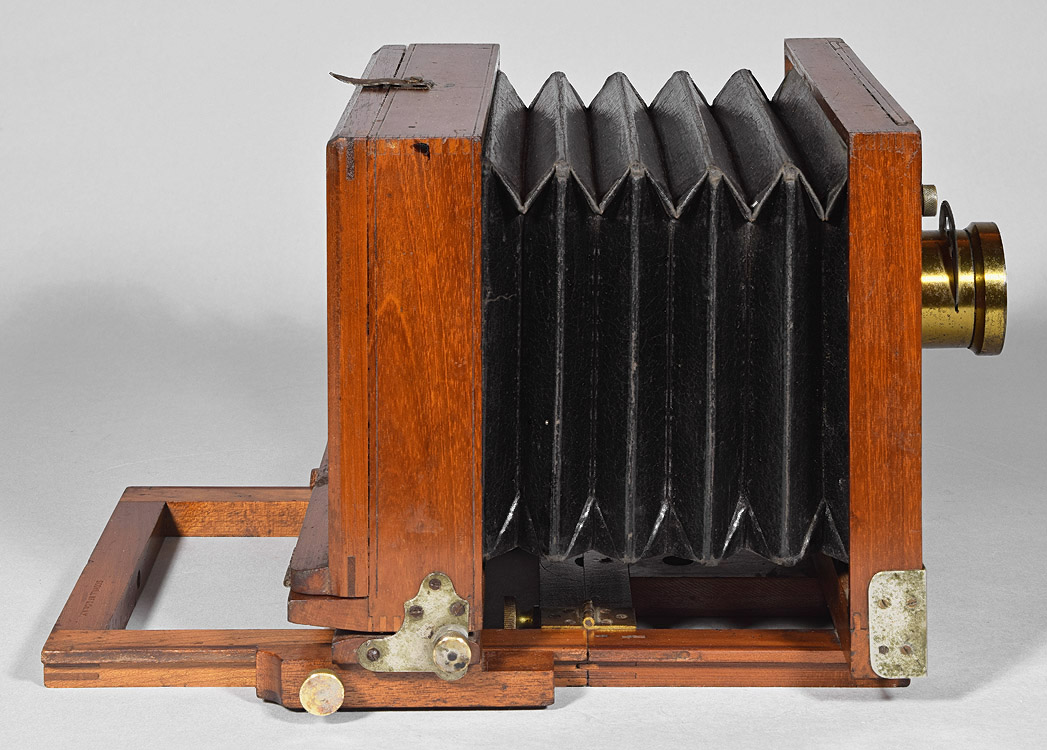

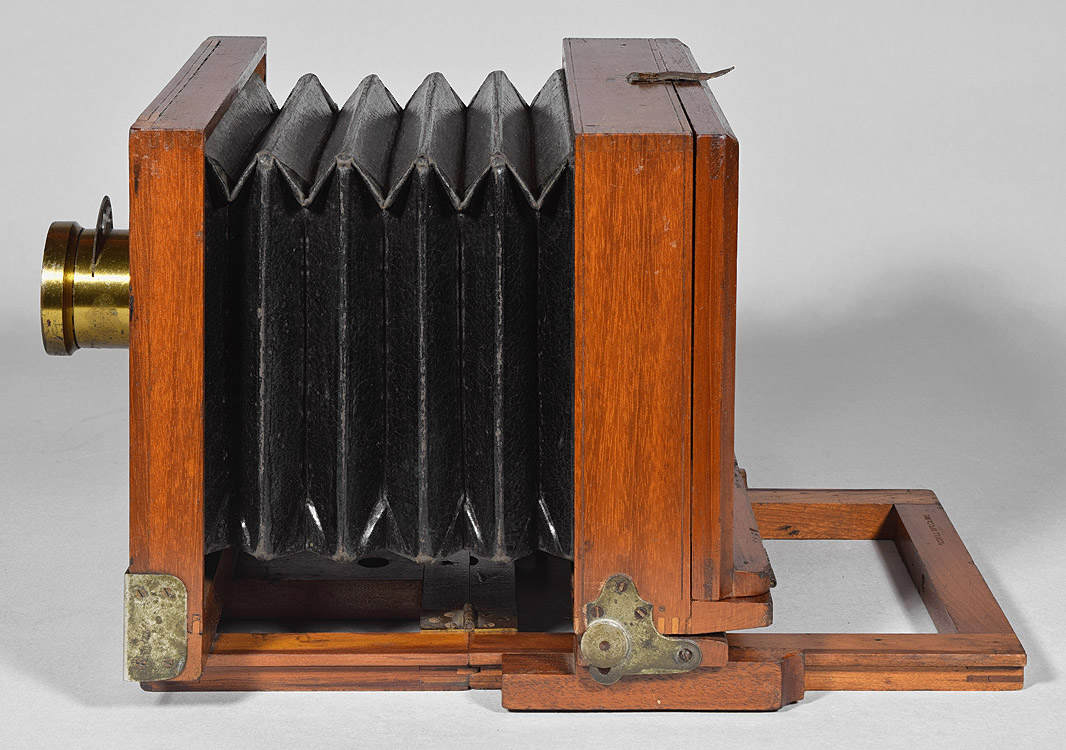
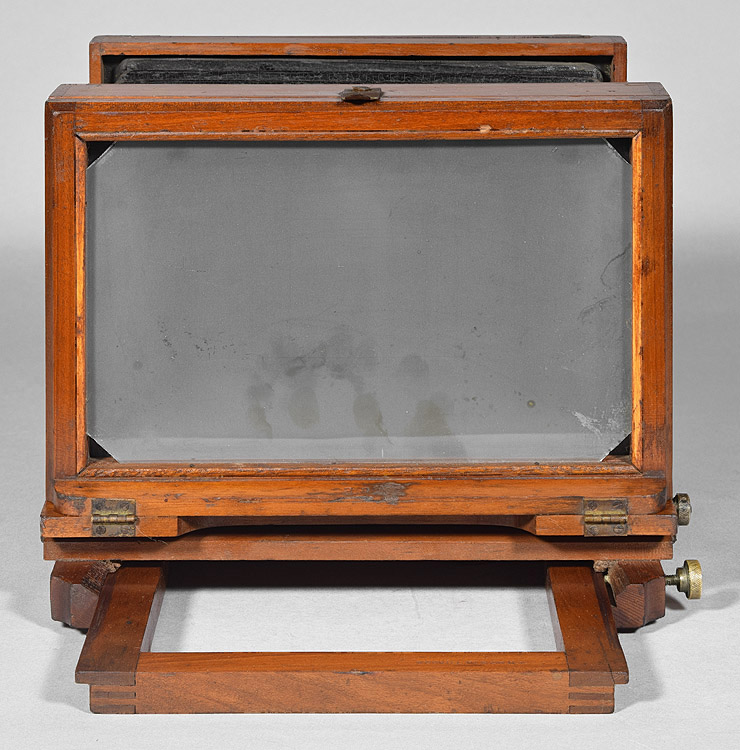
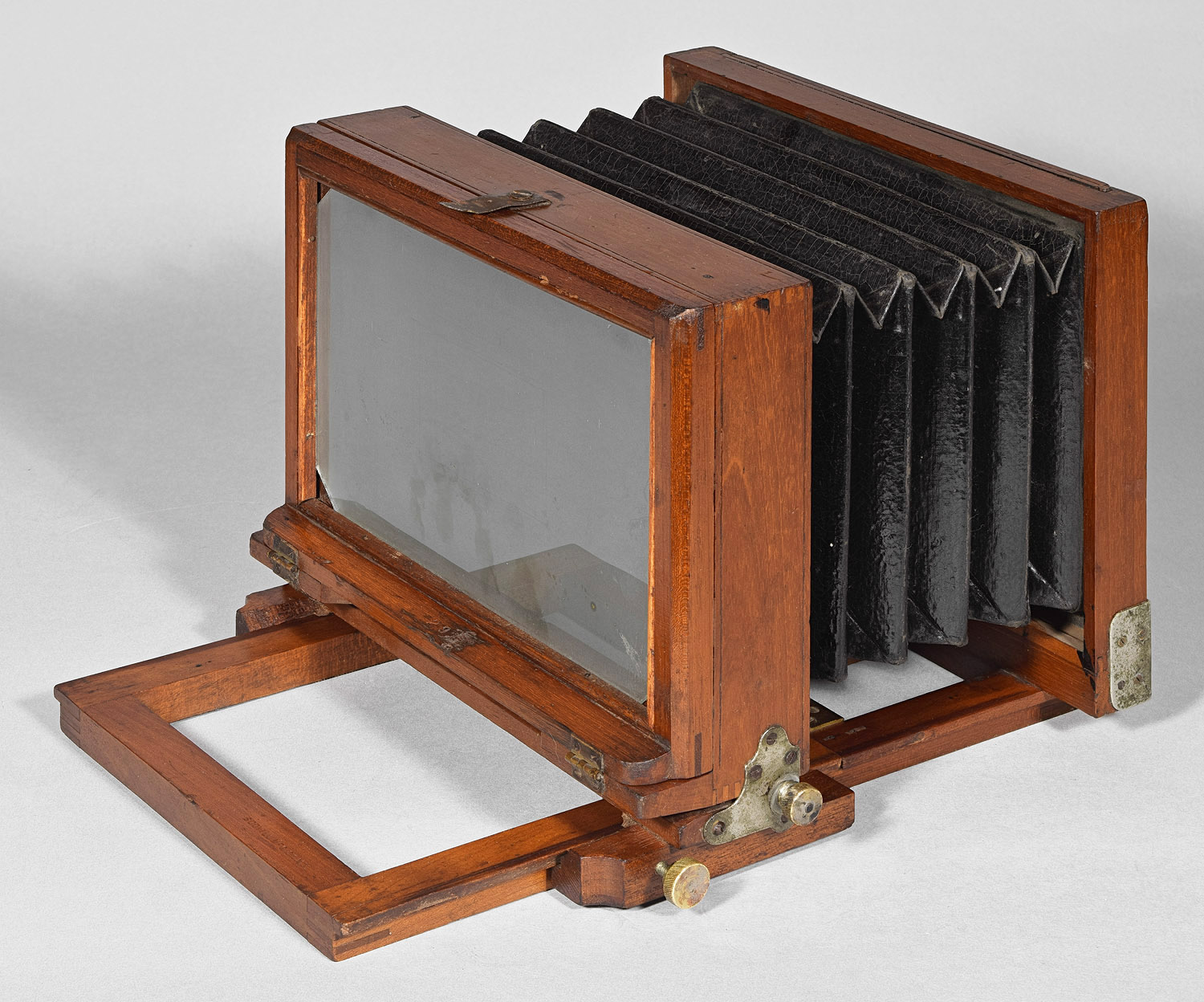
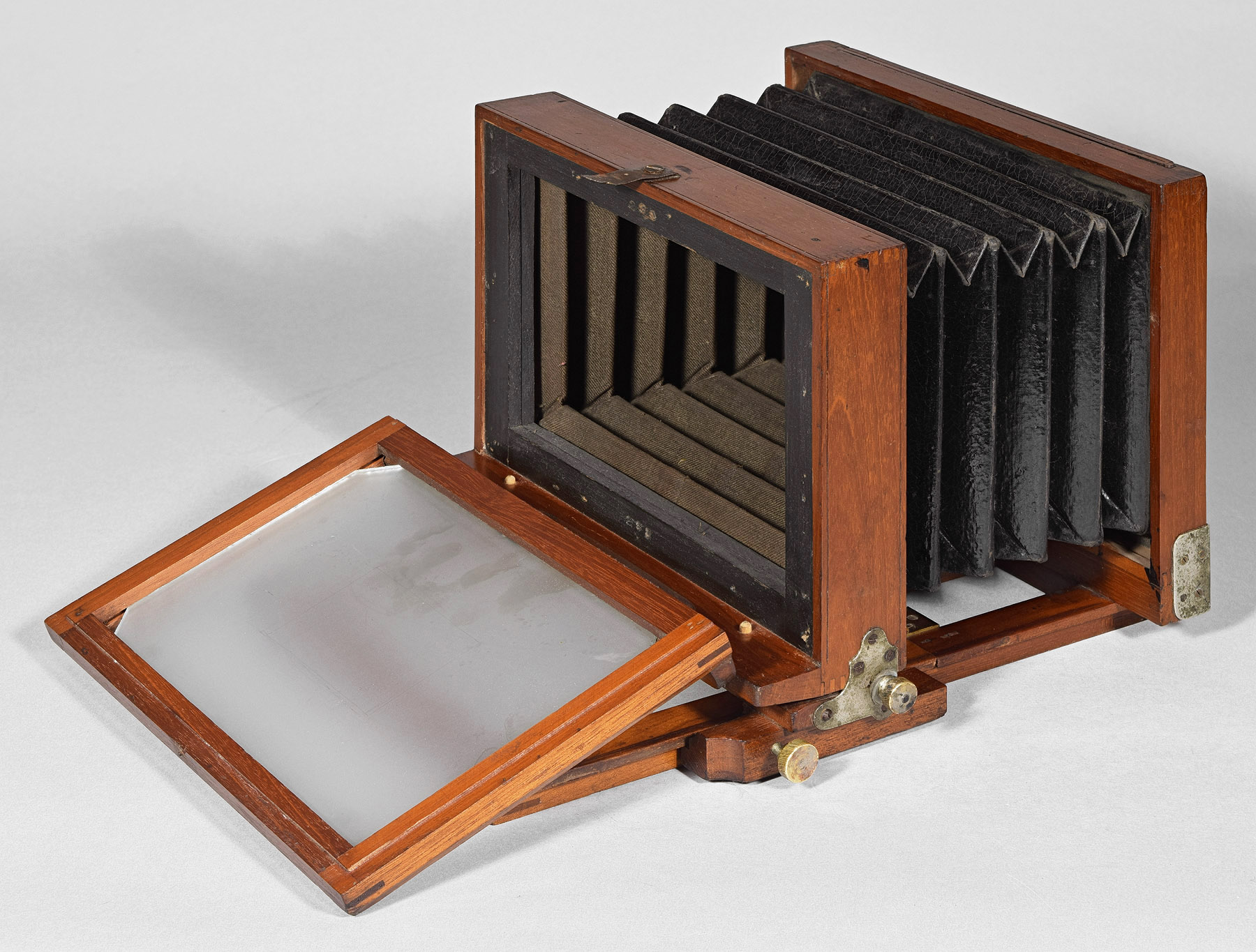
Bottom
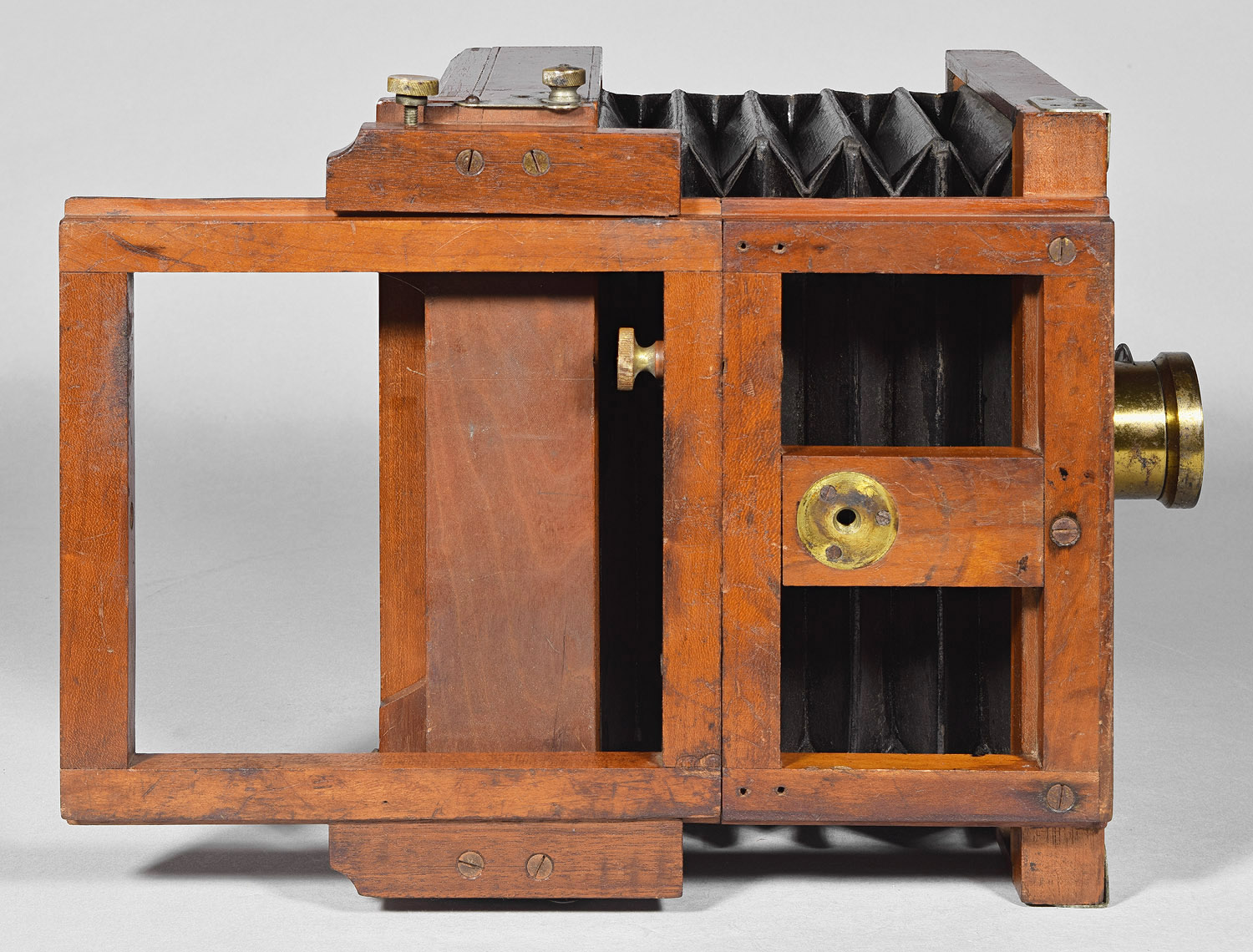
Stamp, upper lens board: "Scovill Mfg. Co., N.Y."
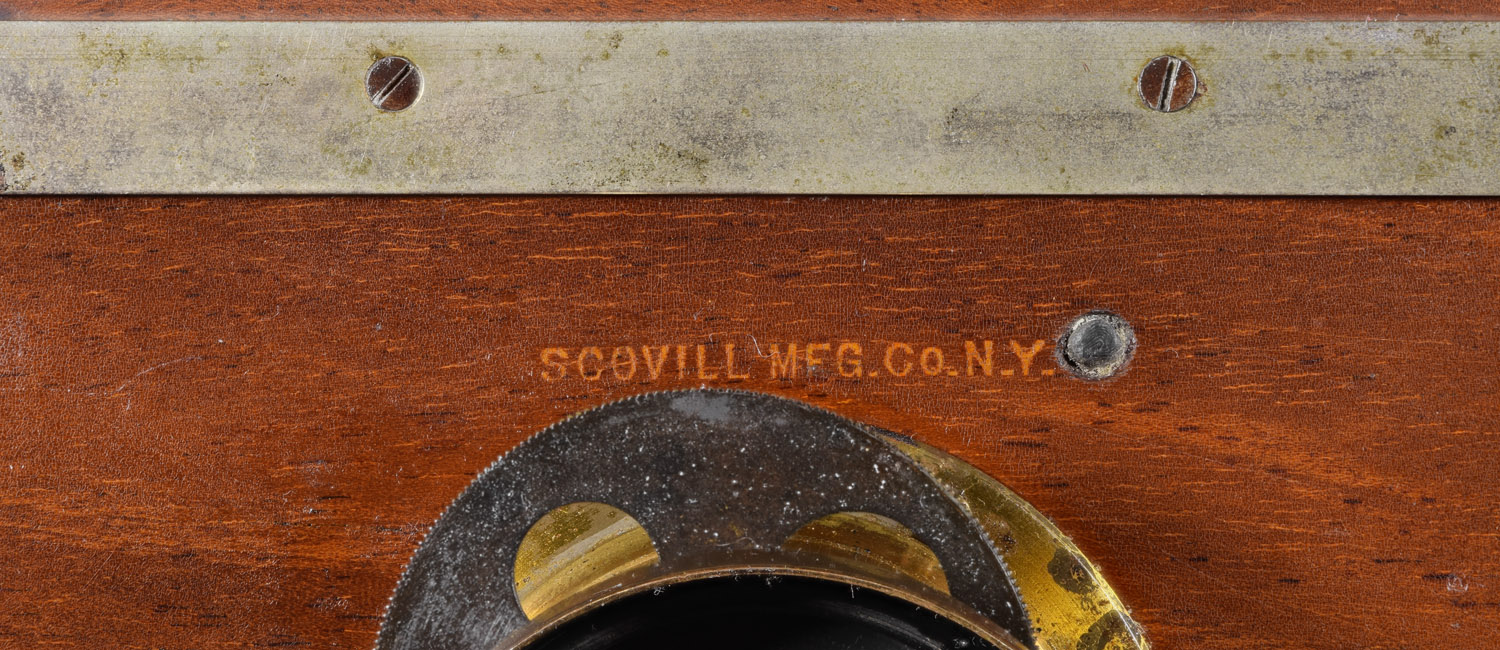
Stamp, rear surface of platform - same stamp as on the lens
board.

Stamp, inside of upper rear standard: looks like "299".

5 x 8" serial number probably 293 camera
with a platform having "L"-shaped edges the same as the Blair Utility
Camera and the L.M. Prince & Bros. Utility Camera.
The clip that secures the ground glass frame is similar to the type used
on Rochester Optical Co. cameras. The example above may have had
the same type clip before its was lost or broken.
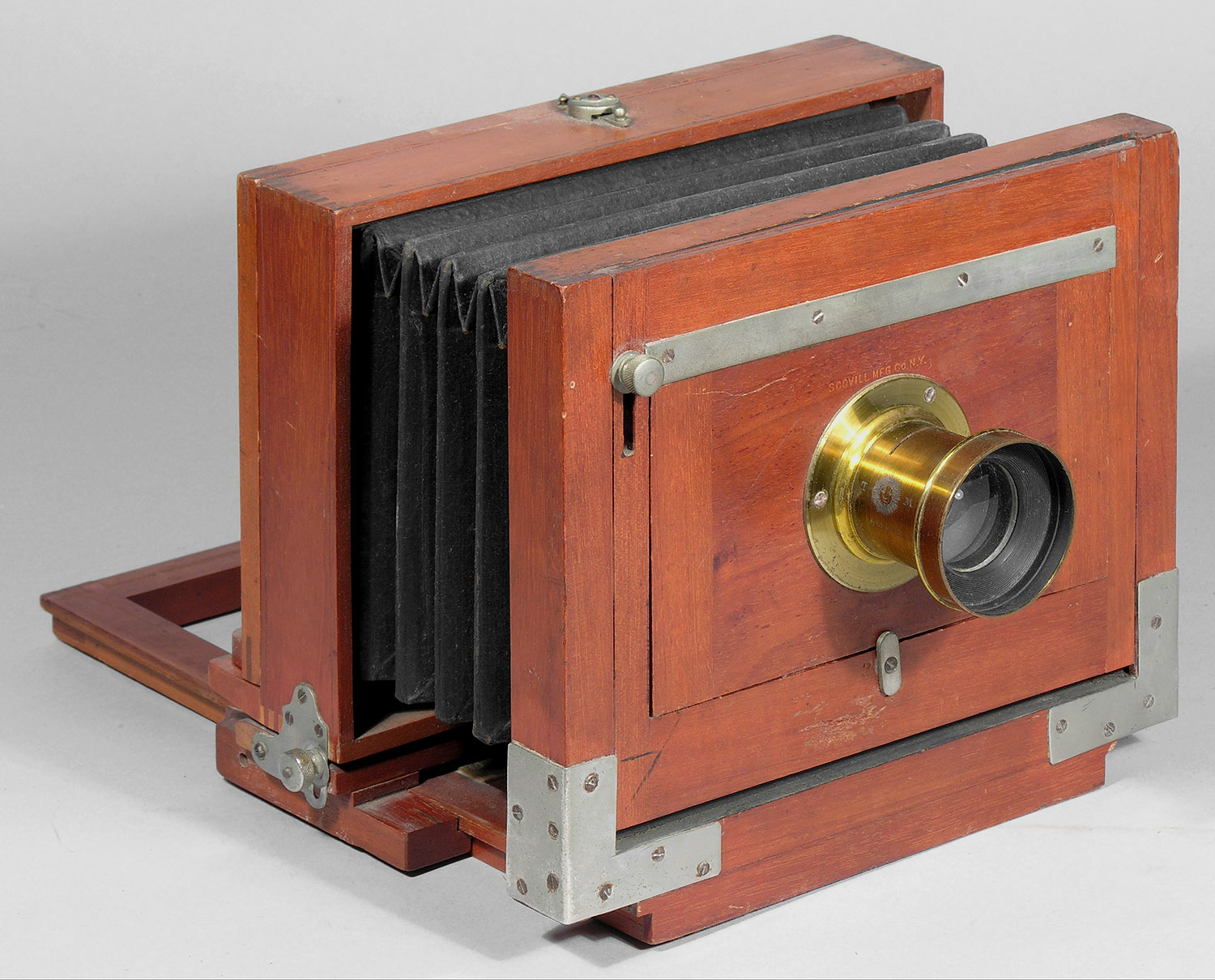
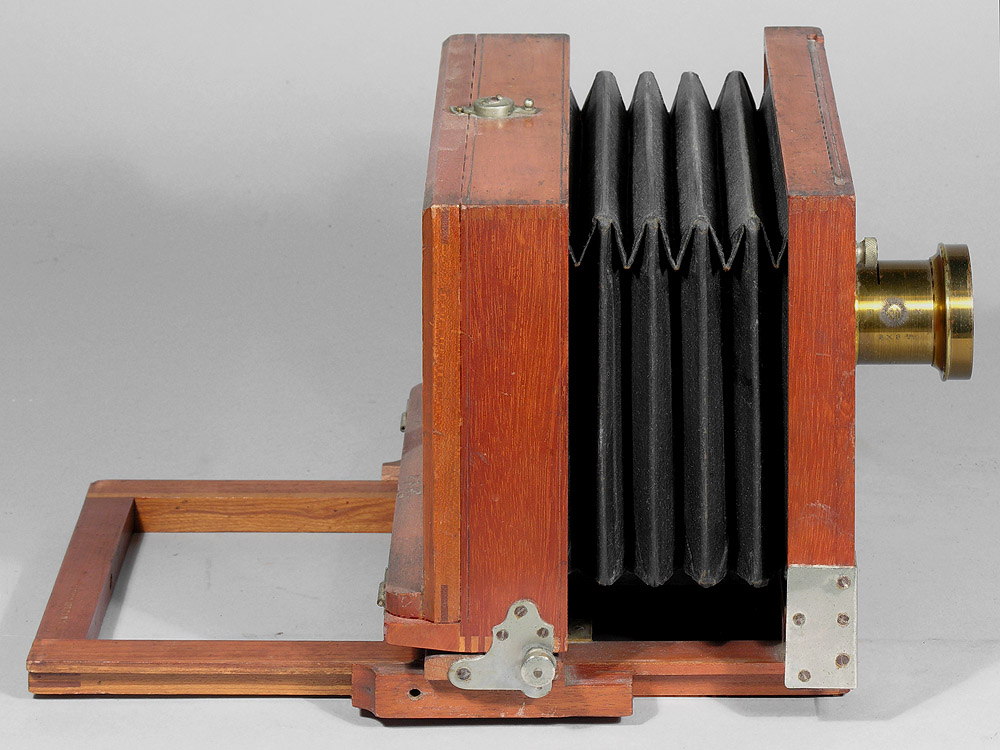
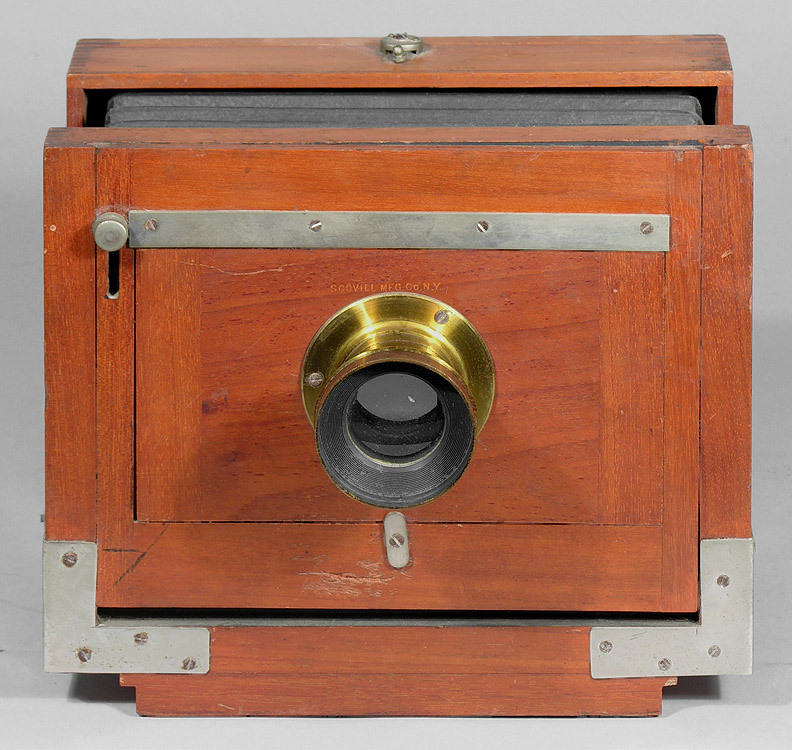
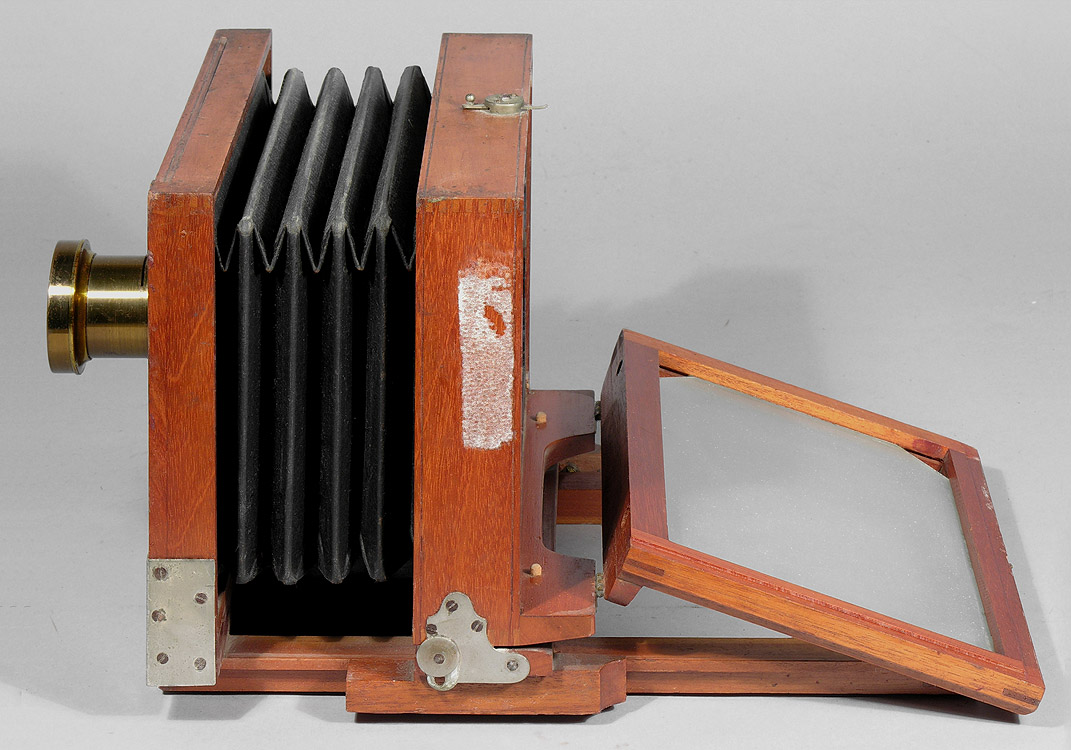
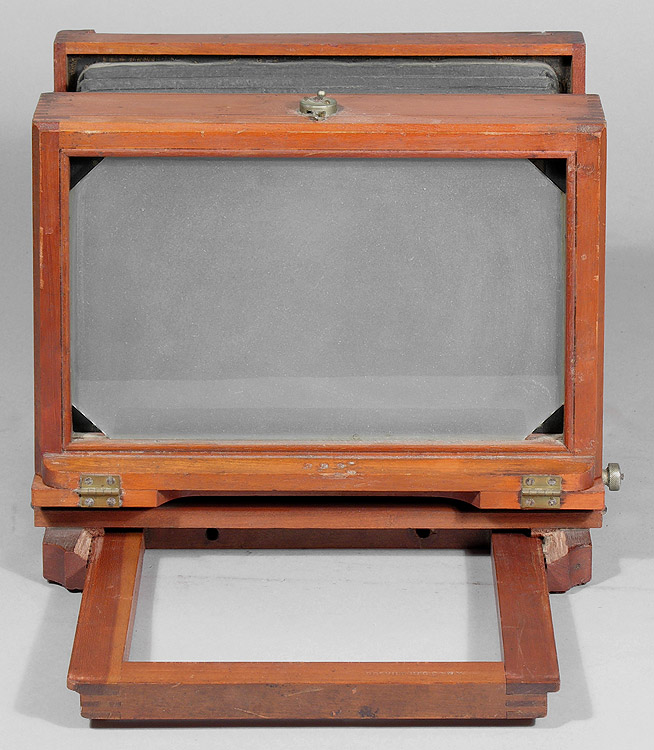
Stamp, upper lens board: "Scovill
Mfg. Co., N.Y."

Stamp, lower rear standard, serial number "293".

Manufacturer:
Scovill Mfg. Co., New Haven, CT factory, sold by
James W. Queen & Co. This is a model of
Scovill camera unknown in catalogs. The best name for it so far is
Unknown Scovill Blair-Utility-Type View Camera. Three
such cameras are known to me. The first two to be found have
Scovill stamps only (Serial No. 299 and 293), whereas the last one to be
found has both Scovill and Jas. W. Queen, Philad'a, PA stamps (one of
the Qween stamps partially obliterating a Scovill stamp. Serial No. 190 was
obviously sold by Jas. W. Queen & Co., Philadelphia, PA, being so
stamped twice on the top of the rear platform rail. Queen & Co.
was a supplier of photographic goods, including camera, most of which
were sold as the manufacturer's product, but a few of which were
presented in Queen & Co. catalogs as their own and given their own name. All three cameras are
identical in form and finish, except that Serial No. 190 does not have
the metal corner guards as have the others. They share a number of
features different from any other camera made by the Scovill Mfg. Co.,
it seems as if it couldn;t have been made by Scovill. The features unlike
other Scovill products are: 2. These cameras all have downwards hinging
ground glass frame, like many of Scovill's less-expensive models, such
as the Waterbury View Cameras (4
variations), the Favorite View, and the
New York View. However, while the
common Scovill models mentioned have very plain ground glass frame rails
having square or rectangular cross-sections, the ground glass rails of
this model start out with a 3/8" square cross-section, but then taper
for an additional 3/16". This appears identical to that found on
the Rochester Optical Co. New Model
Variation 1.0, an early ROC model, which suggests that the 3. Their ground glass is secured not by
inexpensive brads, or even quarter-round moldings, as used in some
Scovill cameras, but by a flatter retaining molding which can nailed
with brads to the frame by hand much easier than a quarter-round
molding. This detail is like that seen in the
Samuel Peck & Co.
(owned by Scovill) Stereo Camera Example 2, c.1880. This
feature may therefore indicate a rather early dry plate camera -
i.e., early 1880's. 4. Two of the three examples (s/n's 190 and 293) are sporting a
circular, spring-loaded catch at the top of the rear standard engages a
brad to hold the ground glass frame in place.
Brads on the long edges of each plate holder are likewise engaged
by the catch. No other Scovill product has ever been found to have
such a catch. Rochester Optical Co. models often have circular
catches. In fact, the catches seen here are virtually
indestinguishable from ROC catches. That it appears on two
examples means that it was manufactured that way, not just altered by
the camera owner. The third example (s/n 299) has a home-made
clasp where a circular catch may have originally been, 5. The rear standard has wooden blocks that slide through the
L-shaped rails of the platform. This is more like the
Rochester Optical Co. New Model Var. 1.0
View and the Blair Camera Co.
Utility View. 6. The front and rear standard box joint construction is unlike
the other Scovill cameras. In trying to
understand Scovill models, I have been comparing their front and rear
standard constructions, where sometimes the box joints sit upon blocks
of different heights and sometimes they don't. When the research
is finished, I will add a web page comparing them all, but, for now,
these three cameras are different from all the other Scovill cameras I
have ever owned.
It must be that this is one of Scovill's models for which there is
no engraving in catalogs. At this point, there are only two
choices: the Wonder Equipment, which
is offered only in 4x5" size, and the Economic
Camera, which is apparently offered only 6½x8½" or 8x10" size.
It may be that this model was only made for re-sale to firms like Queen
& Co., who stamped their name on it, and others, who did not stamp their
name on it. References:
Back to American Optical
Co. / Scovill Mfg. Co. (alphabetical)
Date Introduced: - ;Years Manufactured:
early 1880's
Construction: back focus
via push-pull; single swing;
non-reversing; three-piece lens board
Materials: mahogany wood body; fruitwood
platform; black fabric bellows; nickel-plated brass hardware,
varnish finish
Sizes Offered: at least 5x8
Notes:
1. The platform rails have an L-shaped cross-section.
L-shaped rails very uncommon, and so far are only found in the
L.M. Prince Utility View Camera,
made by the Blair Camera Co, and in two variations of a utility-type
camera marketed by Blair itself: the
Blair Utility Camera Variation 1
and the Blair Utility Camera
Variation 2, Neither of the Blair variations generally
show up sporting a Blair label, in spite of being present in Blair
catalogs. The only difference between what I take to be a
Prince Utility and what I take to be the Blair Utility is
that the Prince version has a hinged ground glass frame, whereas the
Blair versions have Blair-style spring backs.
